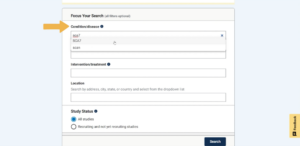
Have you ever wondered what goes on behind the scenes to bring a new drug to market? The process can take a long time. This is because of the many steps required. This is particularly true once human clinical trial participants are involved. In this article, we will explore the first step that drug companies undertake with the US Food and Drug Administration (FDA): filing an Investigational New Drug (IND) application.
One major step in drug development is verifying that a drug is safe in animals. Next, makers of new drugs shift toward planning clinical trials involving human participants. These trials are designed to test the diagnostic or therapeutic benefits of the new drug. These trials also test if the drug is safe. To move forward with early clinical studies involving humans, the FDA requires that drug companies submit an IND.
There are three types of IND applications:
- Investigator IND: This application is used by researchers to study new drugs, or to study approved drugs for new uses or patient populations.
- Emergency Use IND: This application is used in urgent circumstances to authorize use of experimental drugs.
- Treatment IND: This application is used for drugs that have promising early testing for serious or life-threatening conditions; final testing can occur alongside the FDA review period. This application type speeds up the process compared to the Investigator IND.
IND applications are also sorted by category:
- Research (Non-Commercial): Applications submitted to advance scientific knowledge. This is done without the intent to market the drug commercially. These applications are mainly submitted by physicians.
- Commercial: Applications submitted mainly by pharmaceutical companies seeking approval to sell the drug in the open market.
The IND application contains detailed information on three topics:
- Preclinical studies: This section focuses on the testing done in animal models. The data will include animal pharmacology and toxicology studies. Examining this data allows FDA reviewers to assess whether the new drug is reasonably safe to test in humans
- Manufacturing materials: This information describes the chemical composition, producer(s), stability, and controls used for manufacturing the drug substance and the drug product. The FDA reviews these details to ensure that the drug company can effectively produce and supply consistent batches of the drug.
- Clinical Protocols and Investigator Information: This material outlines the proposed clinical study protocols. This information is shared for the FDA to assess the risks for human subjects. It also describes the qualifications of the study researchers, to demonstrate their capability to oversee the drug trial. Finally, this material outlines how the trial will follow regulations set forth by the FDA. These regulations include informed consent protocols and external ethical review.
After submitting the IND application, applicants must wait 30 days before beginning their clinical trial. This wait time allows the FDA to thoroughly review the contents of the IND application. This is to ensure that research subjects will not encounter unreasonable risk.
The IND application process is just the beginning in the drug development regulatory process for conditions like ataxia. Clinical drug trials can last for years, and it takes time for researchers and companies to demonstrate that their drug is safe and effective. When the FDA approves an IND application, doctors and drug companies are one step closer towards an approved drug.
You can learn more about IND applications through the US Food & Drug Administration.
Read Our Other PrepRARE Articles

All about PDUFA Dates

Eligibility in Clinical Trials: Learn More about Inclusion and Exclusion Criteria

All About New Drug Applications (NDAs)

What is an Investigational New Drug (IND) application?

Patient Registries – What are they and why do they matter?




